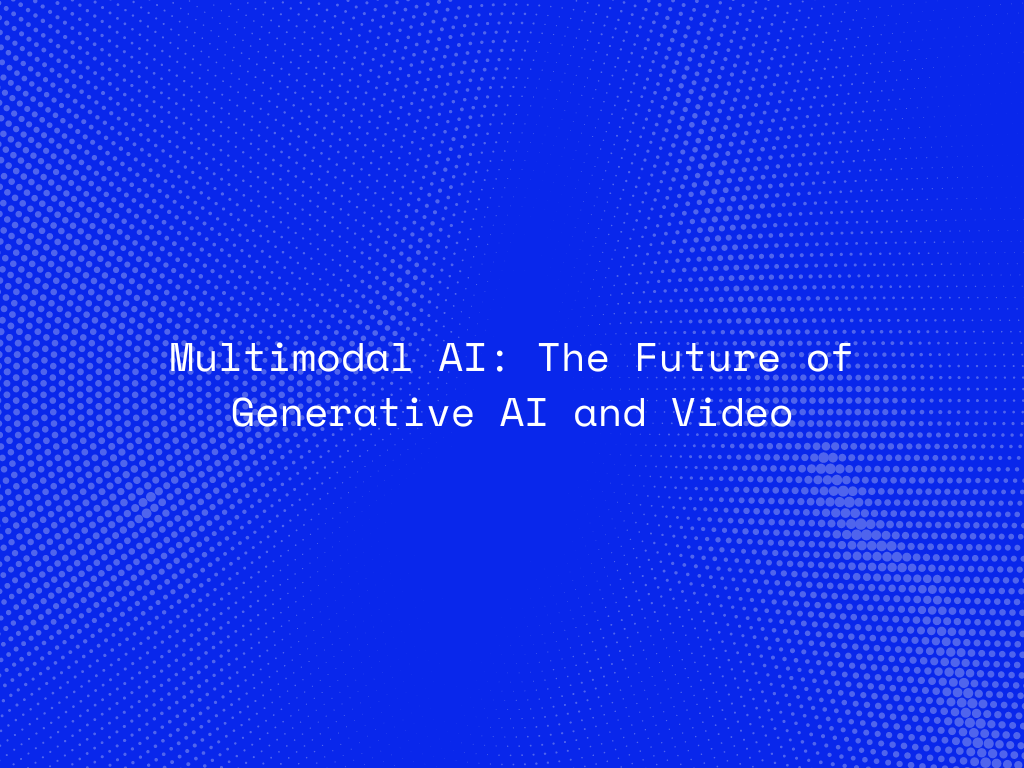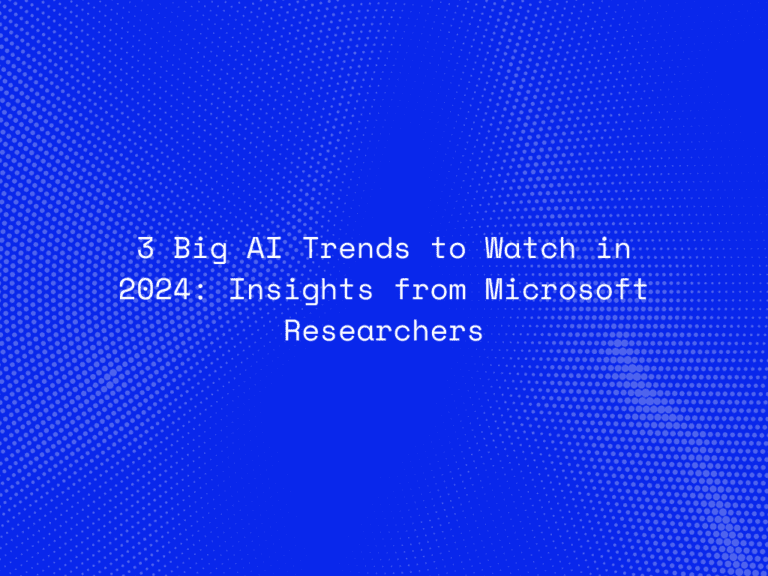As technology rapidly advances, the next frontier for artificial intelligence lies in multimodal AI—AI systems that can process and generate multiple types of data, such as text, images, audio, and video, simultaneously. Generative AI, when combined with multimodal capabilities, is poised to revolutionize the video creation landscape. From automating video production to personalizing video content at scale, multimodal AI is shaping the future of digital media.
In this blog, we explore the rise of multimodal AI, its impact on video production, and what this means for the future of content creation.
What is Multimodal AI?
Multimodal AI refers to AI systems that can process and generate outputs across multiple modalities, including text, images, video, and audio. Unlike traditional AI models that specialize in a single type of data (e.g., only text or only images), multimodal AI integrates and synthesizes information from various formats to create richer, more complex outputs.
In the context of generative AI, this means that the system can generate videos by combining textual prompts, images, audio cues, and even real-time sensor data. For example, a multimodal AI model could take a text description and create a fully animated video complete with sound effects, background music, and character movements.
Connect With Us
The Rise of Multimodal AI in Video
As consumer demand for video content surges, businesses and creators are seeking more efficient and scalable methods for video production. Multimodal AI holds the key to transforming this space by automating many aspects of video creation, from generating scripts and visual assets to creating entire video sequences from scratch.
1. Automated Video Generation
With multimodal AI, creating video content can be as simple as inputting a text description. AI models such as Meta’s Make-A-Video and Google’s Phenaki can transform textual prompts into dynamic video clips, complete with AI-generated visuals, animations, and even soundtracks. These systems allow users to produce videos at scale without the need for specialized software or extensive editing.
For example, imagine a marketing team inputting a product description into an AI system, which then automatically generates a promotional video featuring product demonstrations, customer testimonials, and branded animations.
2. Enhanced Video Editing
Multimodal AI is also revolutionizing the post-production phase of video creation. AI-powered tools like RunwayML offer video editing capabilities that enable filmmakers to edit videos using natural language commands. Instead of manually editing footage, creators can simply describe the changes they want, and the AI will automatically apply those edits.
AI-based systems can also help identify and suggest the best cuts, transitions, and effects based on the content of the video, streamlining the editing process and reducing the time it takes to finalize a project.
3. Interactive and Personalized Video Experiences
Multimodal AI is enabling the creation of interactive, personalized video content that adapts in real-time based on user input. AI systems can combine text, video, and audio to generate custom videos tailored to individual preferences, behaviors, or demographics.
For example, a brand could use multimodal AI to create personalized product recommendation videos for each customer based on their shopping history. Platforms like Synthesia are already enabling companies to create personalized AI-generated videos for customer engagement, delivering highly relevant content at scale.
Connect With Us
Key Applications of Multimodal AI in Video Creation
1. Marketing and Advertising
Multimodal AI can significantly impact the marketing world by allowing brands to generate personalized, engaging videos at scale. AI can analyze customer behavior, segment audiences, and generate targeted video ads that appeal directly to the viewer’s interests, leading to higher engagement rates and conversions.
With text-to-video technology, brands can create an array of tailored advertisements for different audiences, all from a single prompt, helping businesses maintain a strong video marketing presence without the high production costs.
2. Entertainment and Film
In the film industry, multimodal AI can assist filmmakers with scriptwriting, pre-visualization, and even generating entire movie scenes. AI can automatically produce rough cuts of scenes based on a script, complete with character animations, voiceovers, and basic visual effects, allowing directors to experiment with different narrative approaches early in the production process.
Additionally, AI-generated content can serve as a starting point for creative teams, helping to streamline the creative process and reduce the time it takes to develop complex visual effects.
3. Education and Training
Multimodal AI is also transforming education by making video-based learning more accessible and engaging. AI-generated educational videos can be created from textbooks, research papers, or lecture transcripts, turning static content into dynamic video lessons. These systems can also personalize the learning experience by adapting the video content to different learning styles or proficiency levels.
For corporate training, AI can generate training videos tailored to individual employee roles, helping organizations scale learning and development programs with ease.
4. Gaming and Virtual Reality
In the gaming industry, multimodal AI is helping to generate dynamic, immersive worlds that adapt based on player input. By combining visual, audio, and textual data, AI can create responsive in-game environments, interactive storylines, and lifelike non-player characters (NPCs) that react to players’ decisions in real time.
AI-generated videos can also be used for creating realistic cutscenes and cinematics, enhancing the storytelling aspect of games without the need for large production teams.
Connect With Us
Benefits of Multimodal AI in Video Creation
- Scalability: Multimodal AI allows content creators to produce large volumes of video content quickly and cost-effectively.
- Personalization: AI-generated videos can be tailored to individual preferences or demographics, delivering highly personalized experiences.
- Automation: By automating tasks like video generation, editing, and optimization, multimodal AI reduces the need for human labor in content production.
- Creativity Enhancement: AI tools provide new avenues for creativity, enabling creators to explore concepts and ideas that may not have been possible through traditional methods.
Challenges and Ethical Considerations
While the potential of multimodal AI in video creation is vast, there are challenges to consider:
-
Authenticity and Misinformation: As AI becomes more adept at generating realistic videos, the line between reality and AI-generated content may blur. There is potential for the misuse of AI to create deepfake videos, leading to ethical concerns around misinformation and deception.
-
Bias in AI Models: AI models are trained on existing datasets, which may contain biases. If not addressed, these biases could perpetuate harmful stereotypes or reinforce existing inequalities in media representation.
-
Job Displacement: The automation of video production could lead to job displacement in the creative industry, especially for roles traditionally involved in content creation, such as video editors, animators, and production assistants.
To mitigate these risks, it’s essential to establish ethical guidelines and best practices for the responsible use of multimodal AI in content creation.
The Future of Multimodal AI and Video
The future of video content creation lies in the integration of multimodal AI with emerging technologies like virtual reality (VR), augmented reality (AR), and haptic feedback. These advancements will enable even more immersive and interactive video experiences, where users can engage with content in real time and influence the outcome of stories.
Moreover, as AI models become more sophisticated, we may see a shift towards real-time video generation, where content is created dynamically in response to live data inputs, allowing for unprecedented levels of personalization and engagement.
Conclusion
Multimodal AI is set to revolutionize the way we create and consume video content. By combining multiple data modalities, generative AI is unlocking new possibilities for automation, personalization, and interactivity in video production. While challenges remain, the benefits of AI-driven video creation are vast, offering new opportunities for marketers, filmmakers, educators, and creatives to push the boundaries of what’s possible in digital media.




